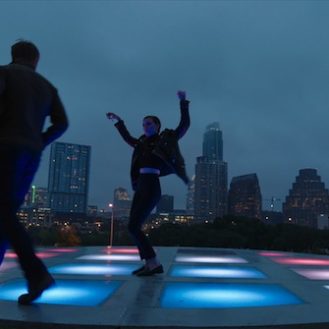It was nice to see a young adult book series stick to its gritty tone and not feel the need to make it lighter for a mainstream audience. That’s exactly what The Hunger Games did with its first venture to the big screen.
It did, however, succumb to attributes that felt reminiscent to other franchises with a widespread teen audience. One of these beats being complications with affection between two strapping young lads and a strong willed heroine. I guess that’s what happens when the franchise is being touted as “the next big thing” for that core crowd.
The second instalment to The Hunger Games story – Catching Fire – is even darker than the first film. It even affects the movie’s colour palette which has a deeper hue to the riveting visuals.
That said, it doesn’t feel as if Catching Fire is trying to purposely separate itself from other films based on books; this is coming from someone who has never picked up a Hunger Games novel. It completely stands on its own, but movie goers don’t see this as an intentional decision made by producers. It’s to stay faithful to source material that has an impending sense of doom. At least, that’s my estimation. Fans will be the ultimate judges.
What feels like a large portion of Catching Fire is dedicated to the film’s build up. Katniss Everdeen (played with force by Jennifer Lawrence) and Peeta Mellark (played effectively by Josh Hutcherson) are now dealing with post-game ceremonies, public appearances and keeping up the facade of the “perfect power couple”.
Scenes between Lawrence and Hutcherson are reserved and moderately paced to fit their growing relationship in the film. After all, they’re still learning about each other. These exchanges are competently acted by both leads and have a genuine essence of watching two people warm up to one another.
Then, there are the politics behind the confidence and the celebrity statures Katniss and Peeta have to keep up. Woody Harrelson, Elizabeth Banks, and Lenny Kravitz reprise their roles as the couple’s support team and personal relations committee. They too are putting on an act and have their stakes raised as quickly as Katniss’ and Peeta’s.
Catching Fire is a film that takes place in its own dystopian universe, but these tricks of the trade materializing each strategy brings that much needed realistic depth to the sequel. These scenes of planning and manipulating while trying to cast emotions aside are actually more captivating than the action itself.
When Katniss and Peeta are thrown into a new game of survival against past winners of The Hunger Games, I was still interested but I wasn’t as excited as Francis Lawrence’s movie wanted me to be.
Everyone competing in the grand game is a great performer ranging from Jenna Malone’s catty Johanna Mason and Jeffrey Wright’s conserved tech wiz Beetee Latier. However, it’s as if everyone’s been directed to downplay nearly every element of the battle. When the brawl gets lively, it catches us off guard and it’s fleeting to boot.
I can appreciate the filmmaker wanting to apply the same taut poker faced suspense that worked wonders earlier in the film. But, when these characters are faced with more critical life-or-death circumstances, I expect to see everyone sweat a bit more.
The Hunger Games was a good film overall and a pleasant welcoming into a new world. While Catching Fire’s second and third acts are not as enthralling as I hoped they would be, the sequel is still a notch above its predecessor. This series is heading in a progressive direction. Bring on Mockingjay!





Be the first to comment